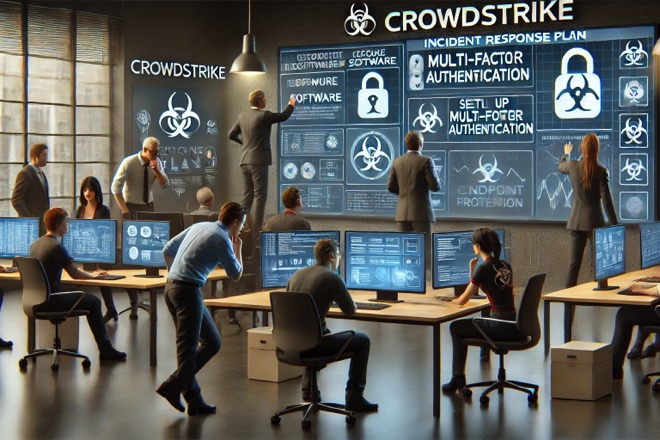When a Software Update Grounded the World: Lessons from the CrowdStrike Crisis and the Urgent Need for Cybersecurity Overhaul
By Jithendra Antonio
In the ever-evolving landscape of cybersecurity, the recent debacle involving CrowdStrike serves as a stark reminder of the fragility of our digital infrastructure. A seemingly innocuous software update spiraled into a global crisis, grounding flights, disrupting financial markets, and sending shockwaves through the supply chain. As we dissect this incident, it becomes clear that the solutions to prevent such occurrences extend far beyond mere technical fixes. They require a comprehensive reevaluation of how we approach cybersecurity in an increasingly interconnected world.
The Fallout of a Single Update
On July 19, 2024, a routine update to CrowdStrike's Falcon software led to a catastrophic failure across multiple sectors. Major airlines, including Delta and American Airlines, were forced to ground flights as their systems crashed due to the infamous Blue Screen of Death (BSOD). The London Stock Exchange reported disruptions in its news feed, impacting the dissemination of critical financial information. This incident not only affected the immediate operations of these companies but also highlighted the vulnerabilities inherent in our reliance on technology.
The impact on the stock market was immediate and severe. Shares of CrowdStrike plummeted by 18%, while Microsoft, whose cloud services were also affected, saw a dip of over 2%. This incident exemplifies how a single point of failure in cybersecurity can lead to widespread economic repercussions, affecting not just individual companies but entire industries.
A Multi-Faceted Approach to Mitigation
To prevent a recurrence of such a situation, organizations must adopt a multi-layered strategy that encompasses technological, procedural, and strategic solutions.
Technological Enhancements
- Advanced Endpoint Protection: Organizations should invest in next-generation endpoint protection solutions that leverage artificial intelligence and machine learning. These tools can provide real-time threat detection and response capabilities, significantly reducing the risk of widespread disruptions.
- Unified Security Platforms: A single integrated platform for cybersecurity can streamline operations and improve response times. By consolidating various security functions into one solution, organizations can reduce complexity and enhance their ability to respond to threats.
- Automated Incident Response: Implementing automated response mechanisms can drastically reduce the time it takes to address security incidents. Automated containment actions can be triggered when threats are detected, isolating affected systems to prevent further damage.
- Rigorous Update Testing: Before deploying updates, organizations should conduct extensive testing in controlled environments to identify potential issues. This proactive approach can prevent the kind of catastrophic failures seen with the CrowdStrike incident.
- Regular Training and Awareness: Continuous training programs for employees on cybersecurity best practices are essential. Educating staff about recognizing phishing attempts and understanding the importance of reporting suspicious activities can significantly bolster an organization’s security posture.
Strategic Reassessments
- Comprehensive Risk Assessments: Organizations should conduct regular risk assessments to identify vulnerabilities in their systems. This proactive approach enables them to prioritize security measures based on the potential impact of various threats.
- Business Continuity Planning: Developing and maintaining robust business continuity plans ensures that organizations can continue operations during and after a cybersecurity incident. This includes strategies for data recovery, system restoration, and effective communication during crises.
- Adopting a Zero Trust Model: Implementing a zero trust security model, where no user or device is trusted by default, can significantly reduce the risk of breaches. This approach involves verifying every user and device attempting to access resources, regardless of their location.
A Call to Action
The CrowdStrike incident serves as a clarion call for organizations worldwide to reassess their cybersecurity strategies. As our reliance on technology deepens, so too does our vulnerability to disruptions that can cascade through entire industries. By adopting a multi-faceted approach that combines technological advancements, procedural improvements, and strategic reassessments, organizations can better prepare for the inevitable challenges that lie ahead.
In a world where a single software update can ground flights and disrupt financial markets, the time for action is now. The lessons learned from this incident must not be forgotten; they should propel us toward a future where cybersecurity is not just an afterthought but a foundational element of our digital infrastructure. Only then can we hope to safeguard our interconnected world against the threats that loom on the horizon.

(The writer is a Consultant specialised in Data Analytics with a Special Focus on Sri Lanka’s Future Direction, and in the fields of Sustainable Energy, ESG, Investments and telecommunications. He can be reached at jithendra.antonio@gmail.com.)

